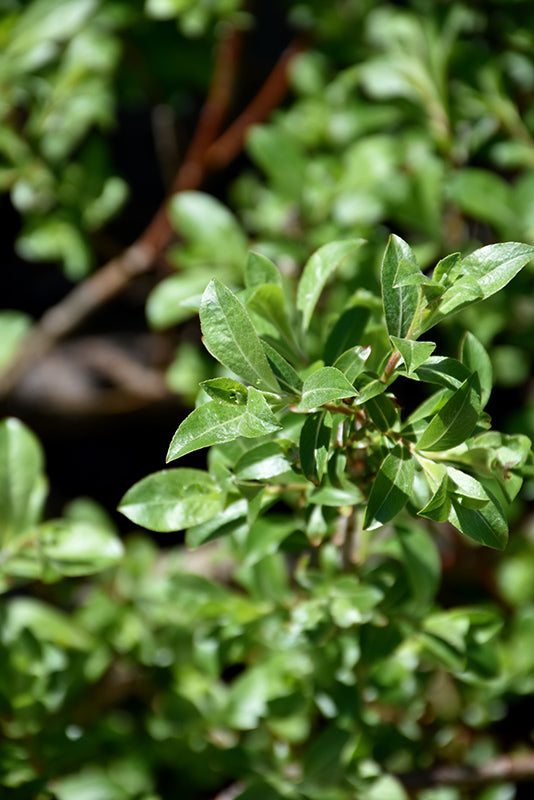Mt. Aso Pink Japanese Pussy Willow features delicate pink catkins along the branches from late winter to early spring, which emerge from distinctive red flower buds before the leaves. The flowers are excellent for cutting. It has bluish-green deciduous foliage. The pointy leaves turn yellow in fall.
Landscape Attributes
Mt. Aso Pink Japanese Pussy Willow is a multi-stemmed deciduous shrub with an upright spreading habit of growth. Its average texture blends into the landscape, but can be balanced by one or two finer or coarser trees or shrubs for an effective composition.
This shrub will require occasional maintenance and upkeep, and is best pruned in late winter once the threat of extreme cold has passed. Gardeners should be aware of the following characteristic(s) that may warrant special consideration;
- Messy
Mt. Aso Pink Japanese Pussy Willow is recommended for the following landscape applications;
- Accent
- Hedges/Screening
- Naturalizing And Woodland Gardens
Planting & Growing
Mt. Aso Pink Japanese Pussy Willow will grow to be about 15 feet tall at maturity, with a spread of 15 feet. It has a low canopy with a typical clearance of 2 feet from the ground, and is suitable for planting under power lines. It grows at a fast rate, and under ideal conditions can be expected to live for 40 years or more.
This shrub does best in full sun to partial shade. It is quite adaptable, prefering to grow in average to wet conditions, and will even tolerate some standing water. It is not particular as to soil type or pH. It is highly tolerant of urban pollution and will even thrive in inner city environments. This is a selected variety of a species not originally from North America.
Details
Botanical Name
Salix gracilistyla 'Mount Aso'
Common Name
Mount Aso Pink Japanese Pussy Willow
Hardiness Zone
- 5a
Appearance
Max Height
15 feet
Max Spread
15 feet
Plant Form
Foliage Colour
- Green
Fall Colour
- Yellow
Flower Colour
- Pink
Edible
Edible Component
Edible Harvest Period
Edible Use
Fruit Colour
Growing
Flowering Period
Late Winter to Early Spring
Moisture
Average to Wet
Sunlight
Full Sun to Partial Shade
Maintenance
Occasional
Deer Resistance
Get more information about this plant and others with our comprehensive plant finder tool.




